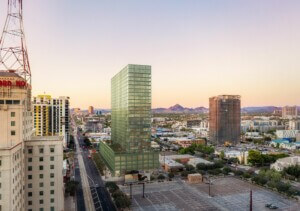On Thursday, the Austin City Council will consider a resolution that would densify the city’s housing production. While rents in Austin may temporarily be leveling off, the city’s affordability crisis is still a major concern. In addressing the city’s single-family-friendly existing zoning regulations, councilmember Leslie Pool is hoping to disrupt the status quo development models that have inadequately responded to Austin’s growth with a focus on making homeownership affordable to a wide income bracket of Austinites.
The resolution cites a 55 percent increase in home prices from 2010 to 2020, with a 20 percent population increase during that time period, and home ownership for middle-income earners dropping from 50 percent to 28 percent over the decade. Pool’s resolution cites a slew of studies, including by the City of Austin, that show reduced lot sizes that allow for multifamily buildings including “townhomes, row houses, tri- and four-plexes” as suited to address Austin’s missing middle. While Austin’s downtown has seen a high-rise boom in recent years, including both residential and commercial space, much of the city remains single-family neighborhoods.
The city’s existing Land Development Code stipulates a minimum lot size of 5,750 square feet, which is restricted to one or two housing units in the majority of the city’s single-family zoning districts. Under the resolution, the minimum lot size of single-family zoning districts would be reduced to 2,500 square feet or less, allowing for the subdivision of existing lots. The maximum number of units per lot would be raised to at least three units in single-family districts, with no requirements for the preservation of existing structures. New zoning districts would be created to allow for “flexible housing configurations” for three-family residences.
To move along increased housing production were the resolution to pass, it would direct the City Manager to streamline development regulations allowing for denser housing, amending existing regulations on “setbacks, height, impervious cover, and floor-to-area ratio (FAR),” limiting Residential Design and Compatibility Standards (known as the McMansion ordinance) meant for single-family structures on multifamily projects, and encouraging utility connections for more units on smaller lots.
Austin’s code has not seen major reforms since 1984, despite reform efforts beginning in 2012 under the title CodeNEXT. The resolution also does not directly address concerns of renters, falling back on language promoting home ownership. While home ownership for a larger portion of society is an admirable goal, it does not address the fact that Austin’s rental prices have increased significantly over the past few years. The City recently lost a case over amending its Land Development Code—the intended result of CodeNEXT—in the Texas 14th Court of Appeals case for not adequately notifying property owners of their right to protest and hold Planning Commission hearings. The proposed changes would have limited sprawl and densified areas closer to Austin’s downtown. Now it is up to the City Council to pass Thursday’s resolution to move forward with any large-scale moves on bringing density to the growing capitol.











